Ever wanted to know more about the pudgy Tomato Frog? Well, here’s your chance. Read on and let our factoids school you on this red amphibian!
Tomato Frog – Fact One
We bet you’ll never guess how the Tomato Frog (Dyscophus guineti) came by its common name…but, just in case you haven’t already figured it out, scientists and taxonomists like to name animals after things they resemble. And the tomato frog, due to its squat, round nature and red color, was appropriately named after the common fruit.
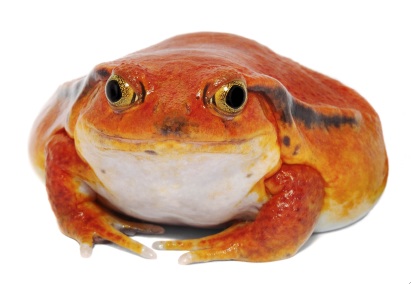
Tomato Frog – Fact Two
Adult tomato frogs and juveniles can look very different from one another. The babies might still have the same color scheme, but they are much slimmer frogs. As they grow, they will develop more vibrant red colors and pack on the pounds.
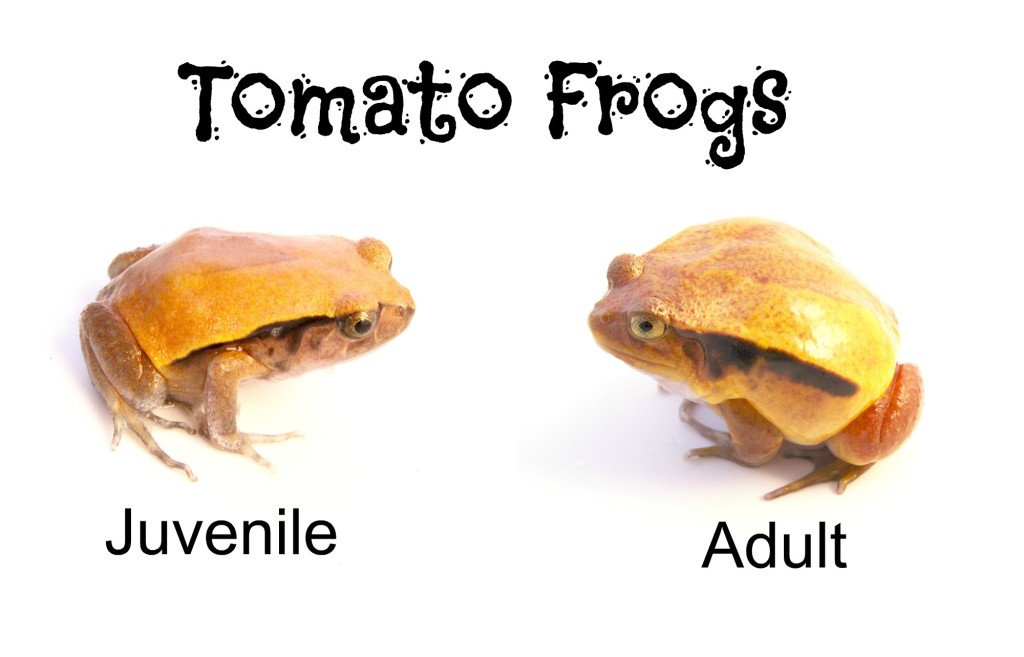
Tomato Frog – Fact Three
Adult males are smaller and duller in color than the females. Males grow to reach about 2.5 inches max, while females can grow to be four inches long snout to vent.
They can be long-lived frogs when properly cared for living up to ten years in captivity. On average, however, six years is a far more common life span.
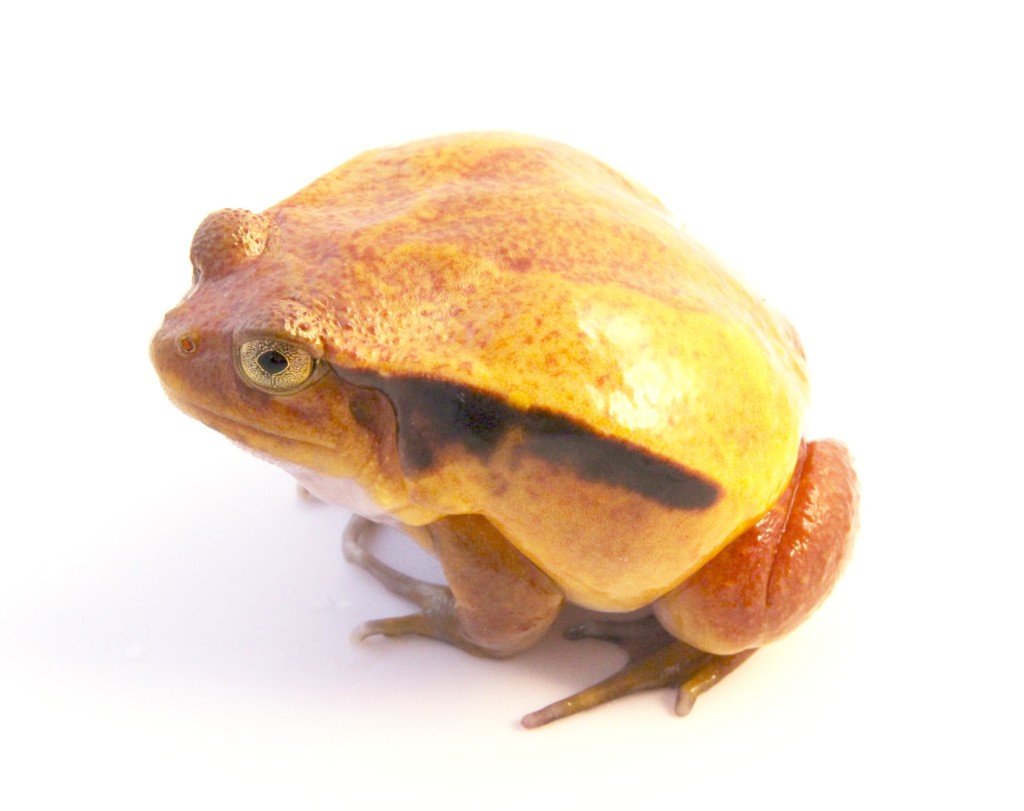
Tomato Frog – Fact Four
A ten-gallon tank is large enough to house two adult tomato frogs, but a 20 gallon would be ideal.
Tomato frogs are secretive animals and enjoy burrowing and hiding, so be sure to provide your frog with a substrate such as soil or coconut fiber/mulch to allow this behavior. It’s also wise not to put any heavy decorative items in their enclosure since they can accidentally crush themselves by burrowing underneath.
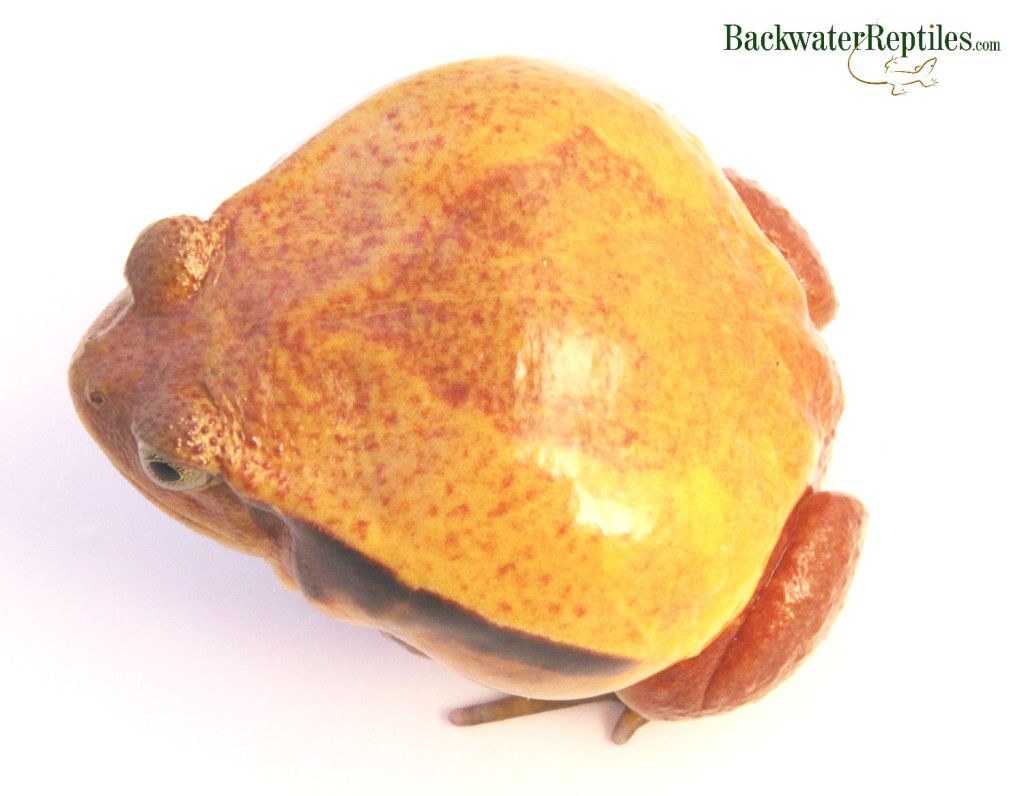
Tomato Frog – Fact Five
Tomato frogs are carnivores and will only eat live insects such as crickets, wax worms, silk worms, and roaches. They also enjoy night crawlers.
It’s a good idea to dust your feeder insects once a week when dealing with adults and more frequently when feeding hatchlings and juveniles.
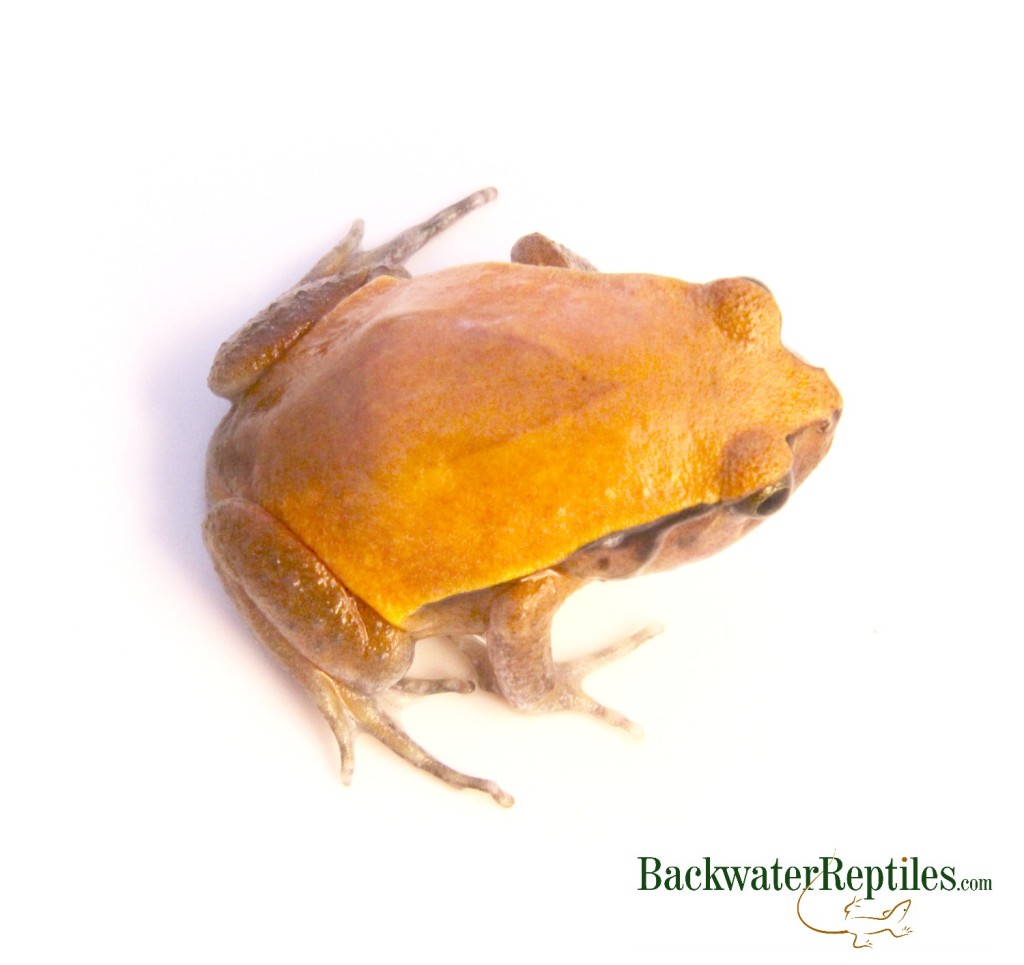
We hope you enjoyed reading our Tomato Frog facts. We think they are fascinating frogs, plus we have a special fondness for fat frogs at Backwater Reptiles. We currently have both hatchling and adult tomato frogs for sale.
